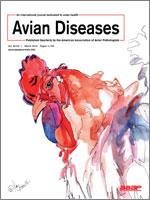Domestic ducks are the second most abundant poultry species in many Asian countries and have played a critical role in the epizootiology of H5N1 highly pathogenic avian influenza (HPAI).In this study, the protective efficacy of a live recombinant vector vaccine based on a turkey herpesvirus (HVT) expressing the H5 gene from a clade 2.2 H5N1 HPAI strain (A/Swan/Hungary/4999/ 2006) (rHVT-H5/2.2), given at 3 days of age, was examined in Pekin ducks (Anas platyrhynchos domesticus). The vaccine was given alone or in combination with an inactivated H5N1 clade 2.3.2.1 reverse genetic (rgGD/2.3.2.1) vaccine given at 16 days of age, either as a single vaccination or in a prime-boost regime. At 30 days of age, ducks were challenged with one of two H5N1 HPAI viruses: A/duck/Vietnam/NCVD-2721/2013 (clade 1.1.2) or A/duck/Vietnam/NCVD-1584/2012 (clade 2.3.2.1.C). These viruses produced 100% mortality in less than 5 days in nonvaccinated control ducks. Ducks vaccinated with the rgGD/2.3.2.1 vaccine, with or without the rHVT-H5/2.2 vaccine, were 90%–100% protected against mortality after challenge with either of the two H5N1 HPAI viruses. The rHVT-H5/2.2 vaccine alone, however, conferred only 30% protection against mortality after challenge with either H5N1 HPAI virus; the surviving ducks from these groups shed higher amount of virus and for longer than the single-vaccinated rgGD/2.3.2.1 group. Despite low protection, ducks vaccinated with the rHVT-H5/2.2 vaccine and challenged with the clade 1.1.2 Vietnam virus had a longer mean death time than nonvaccinated controls (P = 0.02). A booster effect was found on reduction of virus shedding when using both vaccines, with lower oropharyngeal viral titers at 4 days after challenge with either HPAI virus (P < 0.05). Neither rHVT-H5/2.2 nor standard HVT vaccine could be detected in samples collected from multiple tissues at different time points, indicting minimal levels of viral replication. In conclusion, although a minor effect on survival was observed, this study demonstrates the suboptimal protection with the rHVT-H5/2.2 vaccine given alone in Pekin ducks against H5N1 HPAI viruses and only a minor additive effect on virus shedding reduction when used with an inactivated vaccine in a prime-boost regime.
How to translate text using browser tools
23 October 2015
Efficacy of a Recombinant Turkey Herpesvirus H5 Vaccine Against Challenge With H5N1 Clades 1.1.2 and 2.3.2.1 Highly Pathogenic Avian Influenza Viruses in Domestic Ducks (Anas platyrhynchos domesticus)
Mary J. Pantin-Jackwood,
Darrell R. Kapczynski,
Eric DeJesus,
Mar Costa-Hurtado,
Gwenaelle Dauphin,
Astrid Tripodi,
John R. Dunn,
David E. Swayne
ACCESS THE FULL ARTICLE

Avian Diseases
Vol. 60 • No. 1
March 2016
Vol. 60 • No. 1
March 2016
ducks
highly pathogenic avian influenza
turkey herpesvirus-H5 vaccine
vaccination
vaccines




